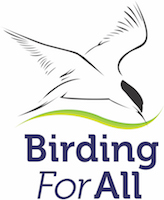GOB 67 – Road Rage
(This article first appeared in the August 2015 edition of ‘Birdwatching’ magazine)
I was asked to speak at the Scottish Bird Fair – or to give it its proper title ‘Scotland’s Big Nature Festival’, and knowing that there was no way I could take all I needed on a plane, and having picked myself up off the floor when I saw the price of the train, I decided to drive up. Hoping to see some species we don’t get down in the southeast corner… naively as it turned out. So Hawkeye and I loaded up and got going.
It’s a fair old drive so there was plenty of time to watch out for wildlife all the way. The mammals list was extensive. Muntjac, then fox, rabbit, hedgehog, grey squirrel and brown rat were all expected. No less than two polecats was a bigger surprise… although, more than likely they were feral ferrets. Several badgers were inevitable, but as we got further north there were a number of hares and three roe deer. Birds included blackbirds and lots of pheasants with some corvids, two kestrels and various others I could not ID.
Of course the sad truth is, none of these were extant, but each was a squished fur or feather ball on the side of the carriageway.
I assumed that the motorway would be the biggest slaughterhouse, what with plenty of traffic and fast speeds, but not a bit of it. It was the frustrating ‘A’ roads, the ones where you might spend 20 minutes with only the back of a truck to look at. The A1 over the border was carnage with deer in the road or lying barely scratched on the embankments.
You might assume that this is just bad luck… random strikes on critters accidentally crossing the path of an HGV driver. However, looking at the endless English & Scottish fields and the open hillsides en route it dawned on me that wildlife was concentrated on the edges where the habitat was richer. Hedges and verges, motorway banks that the public cannot access, ditches and all were more attractive to bird and beast than the arid agri-businesses and boring monocultures. Its no wonder that animals are drawn to the most dangerous places for them. Pesticides push insects to the fringes, attracted by the warm the areas cars create as they pass through or the weed seeds that are blitzed in the fields left to run riot on the verges. Its as if we magnetise the strips that run between hard surfaces and no-go zones.
It is fortunate that there are still some areas of the UK with huge natural habitats but the more pressure we put on the green world to feed or house us, and the more concrete paves our roads the more wildlife gets marginalised.
The journey north had another profound impact on me. I’ve always thought of the ‘garden of England’ as one of the richest in birdlife and, during migration times or in specific coastal wetlands that may still be the case, but every village I went into in the northern bits of England and the southern bits of Scotland I was struck by how much richer they were than my home county. Swifts, swallows and house martins all seem to be doing well in Yorkshire villages or Scottish towns compared with how thin on the ground they seem to be the southern climes. Warblers, flycatchers and finches seemed to be the norm on village edges, whereas my corner of the world gets skinnier pickings.
Maybe its the intensity of land use in town and country but I am also convinced that the rising sea temperatures are pushing a lot of everyday birds further north and robbing the south of its diversity and abundance.
Johnson said the only good thing about Scotland was the road to England, but I want to emigrate to where the government, the wild places and the wildlife suit my soul.
Hear the Podcast





